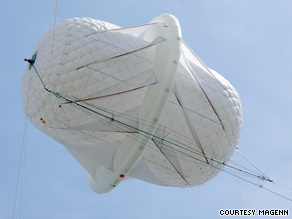From CNET.com
Microsoft wants to show you how to cut your utility bills.
The software giant will enter the burgeoning business of home-energy management on Wednesday with Hohm, a free Web application designed to show consumers how to conserve electricity and natural gas. Microsoft's chief research and strategy officer, Craig Mundie, is scheduled to introduce Hohm and discuss Microsoft's energy strategy at the Edison Electric Institute utility industry conference on Wednesday.
It's a move that stands to shake up home-energy monitoring, a business that dozens of start-ups and IT industry heavyweights, including Google, Cisco, and Verizon, are moving into. There are already several advice Web sites that help consumers get tips on how to save money by providing guidance on weatherizing a home, for example.
But Microsoft designed Hohm as a cloud-computing application--built on the Azure online operating system and Bing search engine--so that users can tap into back-end data analytics for more tailored advice. Hohm provides tips based on models licensed from the Department of Energy and Lawrence Berkeley National Laboratory, which were developed with years of data, according to Microsoft.

The Hohm residential energy management application gives consumers ways to track energy use at home and offers advice on cutting bills.
(Credit: Microsoft)
Another break from the rest of the pack is that Microsoft on Wednesday plans to make a software development kit available to utilities, which would allow a customer's bill information to be fed automatically into the application. Initially, most users need to input data manually, but over time, the company expects that many utilities will provide that service.
"It's analogous to financial applications when they were released years ago that interacted with banks' online applications," said Troy Batterberry, product unit manager for Hohm. "Now you'd be hard-pressed to find a bank that doesn't export data to Quicken or another common format. We see energy going the same route," said Batterberry.
The recommendations from Hohm should get better over time as more people use it, which will improve the underlying analytics, he said.
The first utilities to sign on to use Hohm are Puget Sound Energy, Sacramento Municipal Utility District, Seattle City Light, and Xcel Energy. Two smart-meter vendors--Itron and Landis+Gyr--are also partnering with Microsoft to provide more detailed information.
Business model of the future?
Microsoft has been developing a business around residential energy management for about two years and has been working on the Hohm application for about a year, Batterberry said. He anticipates that it will be in beta testing for about nine months.
Initially, the company plans to sell contextual ads to make some revenue. Down the road, however, Microsoft anticipates that it can become a sort of information broker between customers and utilities looking for ways to improve the efficiency of their customers.
Many utilities have energy-efficiency programs that offer customers discounts to upgrade home equipment, such as more efficient hot water heaters.
As part of their smart-grid programs, some utilities are also testing what are called demand-response programs where they can, with a customer's permission, temporarily turn down an air conditioner thermostat or turn off a hot water heater. This allows the utility to dial back the demand for energy during peak times in exchange for a credit of some sort to consumers.
In a few years, Microsoft expects to be able to aggregate information from several households willing to participate in efficiency programs to utilities. For example, this "demand-side management" service would tell utilities that they can expect a reduction of electricity use during peak times, explained Batterberry.
Personal information is secured by the same service used with Microsoft's HealthVault health care service. But Batterberry said that not everybody will want to cede control of its major appliances.
"Letting customers shed load is an interesting way to keep them in control of their energy usage, but there will be a significant class of consumer that will have issues with centralized control," he said.
Bringing scale home
In the near term, Microsoft expects it can help consumers even if they just want a better dashboard to view home energy usage.
Microsoft and other home energy monitoring companies plan to work with device manufacturers to get energy information from thermostats and "smart plugs." That would allow a person to attach a smart plug to a refrigerator or dishwasher to get usage information in real time to a home network or Web application. Over time, those appliances could be controlled to dial down usage during peak times.
Microsoft also hopes to have more vendors of smart meters, which have two-way communications built in, to support Hohm's data formats, Batterberry said.
Although there is plenty of available information for how to save energy at home, products that provide consumers more detailed usage information or automate tasks are relatively new. The business models to take advantage of efficiency programs in many cases are still under development as well. For example, a utility may prefer that consumers run dishwashers at off-peak times but people are more likely to do that if they can take advantage of cheaper electricity rates.
Microsoft, like Google and many other vendors, are betting that consumers will take a more active role in conserving energy at home. Tools like Hohm will allow them to have better information and take advantage of energy-efficiency programs already offered by utilities, Batterberry said.
"Customers are motivated to save money but one of the problems with this industry is just a lack of awareness," he said.
___
Martin LaMonica is a senior writer for CNET's Green Tech blog. He started at CNET News in 2002, covering IT and Web development. Before that, he was executive editor at IT publication InfoWorld. E-mail Martin.
